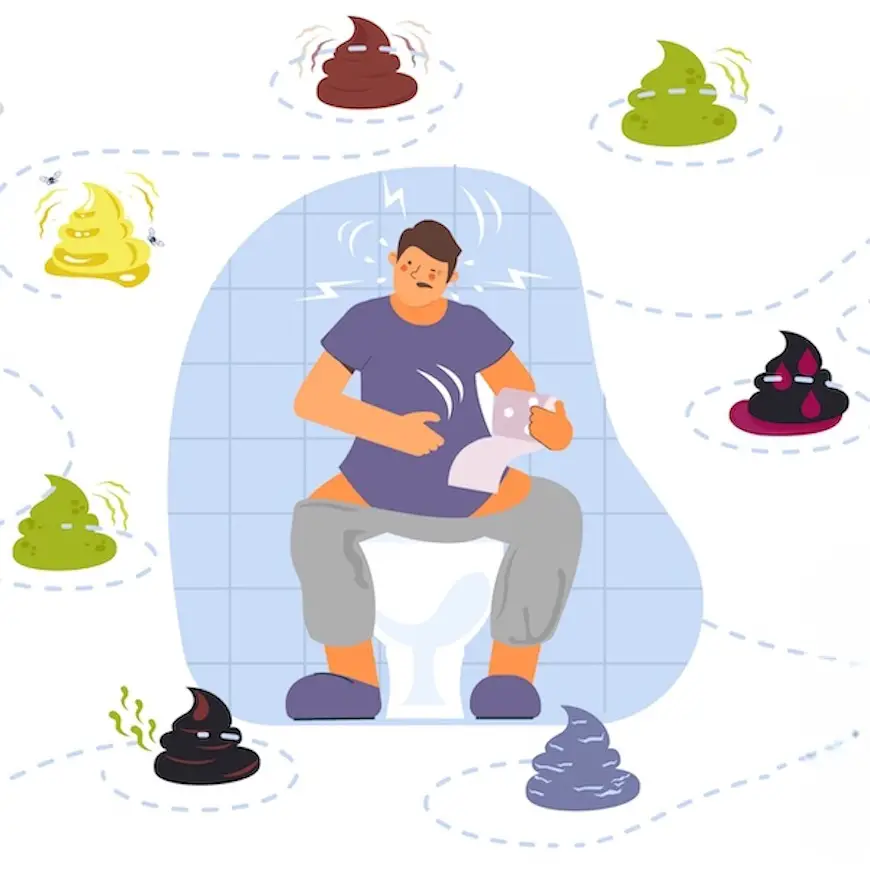Poop, also known as stool or feces, is the waste product of the digestive process in the human body.
From the color, consistency, and odor to the frequency and form of your poop, each aspect tells a unique story about your body’s inner workings. It’s a reminder that our bodies are constantly communicating with us, and by understanding the language of our poop, we can make informed decisions to enhance our health and well-being.
What you flush away each day can actually reveal a great deal about your overall health. We do everything in our power to be healthy. However, our bodies have means of communication that, if we know how to read them, can greatly help our quality of life. In this regard, we often forget about stool.
Usually, this is a topic no one wants to talk about, but today we will share with you some reasons why you should pay more attention to it.
1. Yellow-colored stool
The brown color of stool is due to the presence of bilirubin and bile. Bilirubin is produced in the liver from red blood cells and mixed with bile in the gallbladder before entering the intestines, where bacteria break it down and are excreted in stool or urine. One of the most common causes of yellow stool is a high-fat diet.
According to experts, these include liver and gallbladder conditions, pancreatic disorders, celiac disease, Gilbert’s syndrome, giardiasis, stress and poor diet.
2. White stool
White or clay-colored stools are abnormal and can be a sign of a serious health problem, as stools that are this color are caused by the liver not producing bile or the bile not flowing into the small intestine to break down food. eat. Bile is an essential digestive fluid produced by the liver, stored in the gallbladder and gives stool its normal brown color during digestion.
Liver diseases, such as hepatitis or cirrhosis, can cause white stools. Additionally, certain medications and substances, such as barium used in gastrointestinal X-rays and some antacids containing aluminum hydroxide, can also discolor stools. If white stool occurs, it is important to see a doctor immediately to find the underlying cause.
3. Green-colored stool
Let’s start by pointing out an important fact: you’re not the only one who’s noticed that your poop is unexpectedly green after going to the bathroom. According to Dr. Lee, the color and shine of stool can change from day to day, which is normal because things are always changing. But what could be causing these changes?
- Eating green foods, such as broccoli, kale, and spinach, is the most likely cause of green stools. The chlorophyll that gives these vegetables their green color can also stain your stool.
- Using antibiotics can affect digestion and change the color of stool. Indeed, these drugs can change the bacterial flora in the intestines, giving stool a greenish color. Additionally, some medications can upset the stomach and cause greenish diarrhea due to the presence of bile.
- A change in stool color can also be a sign of an infection or health problem. The presence of a green color can be a sign of a bacterial, viral or parasitic infection in the body, which can cause rapid transport of intestinal contents and unabsorbed bile. In such cases, this and other fluids are not properly absorbed in the intestines, which can result in green or watery stools.
4. Reddish-yellow stool
Dealing with red stool can make you confused and anxious. While this can sometimes be due to eating red foods or colorings such as Pepto-Bismol that contains bismuth, it can also be a sign of bleeding in the lower digestive tract. The latter cause may be hemorrhoids, fissures in the colon or signs of enteritis, bleeding of the stomach or intestines. If you notice bright red streaks on toilet paper or in the toilet bowl and feel pain or itching, it is most likely due to hemorrhoids or anal fissures. It can also be due to enteritis.
However, if red stools are accompanied by fever and discomfort, or blood clumps like coffee grounds, experts recommend calling your doctor immediately because this could be a sign of bleeding in the digestive tract.
5. Black stool
Black stools can result from consuming dark-colored foods and beverages such as beets or supplements such as iron. However, it can also be a sign of bleeding in the upper digestive tract. If the stool is black and has an unpleasant odor, it could be a sign of an underlying health problem, such as a stomach ulcer, gastritis, inflammation or colon polyps. If this is the case, it is important to consult a doctor, who may recommend a colonoscopy or colonoscopy to find the source of the problem.
To stay healthy and feel good, it is important not only to read the body’s signals but also to pay attention to what we eat, how we sleep and what clothes we wear.
